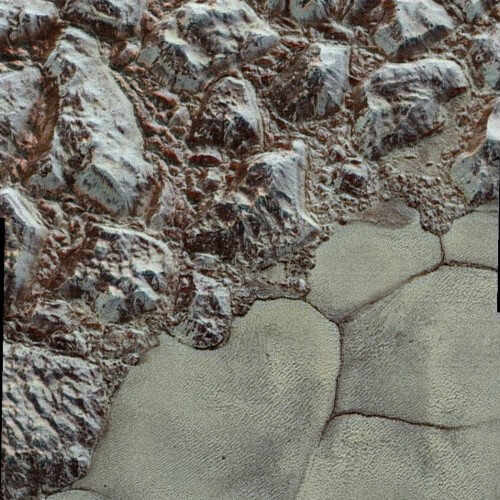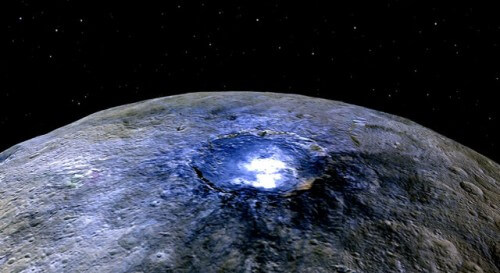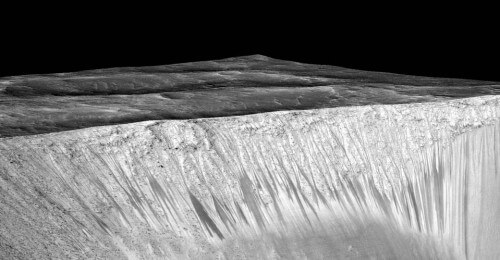The year 2015 was a fruitful year in the field of space, with so many events, successes, discoveries, and yes, also failures, that an overall summary would be quite long, so I will try to summarize (although not with great success) and refer only to the important events of the current year, and also a little About what awaits us next year
A year of discoveries: from the ice plains of Pluto to the sand dunes of Mars

Perhaps the most important and well-known of the many scientific discoveries in 2015 is the first ever observation of Pluto. the probe New Horizons of NASA, after a nine-year journey towards the distant dwarf planet, transmitted spectacular and fascinating photographs that showed that Pluto is complex Much more than what was believed until now, and that even bodies at such a great distance from the sun remain geologically active. Complete areas without impact craters were discovered on the surface of Pluto, which indicates that some geological activity erases the craters over time (as on Earth). The close-up images sent by the probe show various terrain features such as the "Sputnik Planum" plain, which consists mainly of nitrogen ice, where you can see "Cracks” andSmall "holes".. The images also show geologically young mountains that some of them may be Cryovolcanic volcanoes ("Frozen" volcanic activity of water ice, or exotic ice - relative to the Earth - of nitrogen, ammonia and methane). The probe will continue to transmit more information and images from Pluto and its moons next year as well, due to a very slow data transmission rate resulting from New Horizons' enormous distance from Earth (which is now more than 5 billion km). The probe continues now to her next destination, a small body in the Kuiper belt with a diameter of several tens of kilometers, which it is expected to reach on January 1, 2019.
Ceres - the closest dwarf planet to Earth

New Horizons wasn't the only probe to provide the first images of a solar system body this year. task "DawnNASA's Dawn began investigating this year Ceres, the largest asteroid in the asteroid belt between Jupiter and Mars, which was upgraded to the "status" of a dwarf planet following a definitional change by the International Astronomical Union in 2006, which at the same time "downgraded" Pluto for this class. In addition, using its advanced ion engine, Shahar became the first spacecraft ever to enter orbit around two different bodies in the solar system: in 2014 it orbited and studied the asteroid Vesta, and this year it moved to orbit Ceres. In the close-up photographs of Keres, mysterious bright spots were discovered. One of the hypotheses raised to nature is that these are salt deposits originating from frozen water below the surface.
A video based on the photos of the probe "Dawn", where you can see the mysterious bright spots. The color itself is artificial and is intended to emphasize differences in the composition of the surface.
Water on Mars

Another important and central discovery is the one provided by the probe "Hyphen to survey Mars” (MRO) QProved Because temporary phenomena of liquid water exist on Mars today. These are possible in hot periods and when they contain a high amount of salts. Another discovery that NASA provided concerns how the "solar wind" erodes the atmosphere of Mars and causes it to thin out over time. This is one of the causes of the loss of the liquid water that was abundant in the past on the surface of Mars, which today looks like a cold and dry desert. Evidence of liquid water in the past was provided, among others, by NASA's various rovers, including Curiosity and Opportunity, which continue even now to travel and explore the surface of the planet. This year, Curiosity began to closely investigate, for the first time in space exploration, sand dunes on top of mars
Rosetta orbits the comet as it approaches the Sun
Not only NASA is active in the study of the solar system - the probe Rosetta of the European Space Agency, which arrived at comet "67P/Churyumov-Grasimenko" in August 2014, continued to explore it this year as well. The European Space Agency has already published two interesting discoveries from the mission - a comet exists "Ice cycle", which turns directly into gas (in the process of taking off) when the sun shines on it, and returns to freezing with the self-rotation of the comet when the sun no longer shines on it. Rosetta too Identified For the first time oxygen gas O2 which is released from the frozen comet as it approaches the sun, a rare thing in the solar system because oxygen molecules are extremely active and difficult to find freely. Now the European Space Agency is planning the The future of the mission, which will probably end sometime next year with an attempted landing on the comet (which will result in the probe's death).
The following parts will be published later
Summary of 2015 in space, part XNUMX: failures and successes
Part III: Forecasts for 2016
